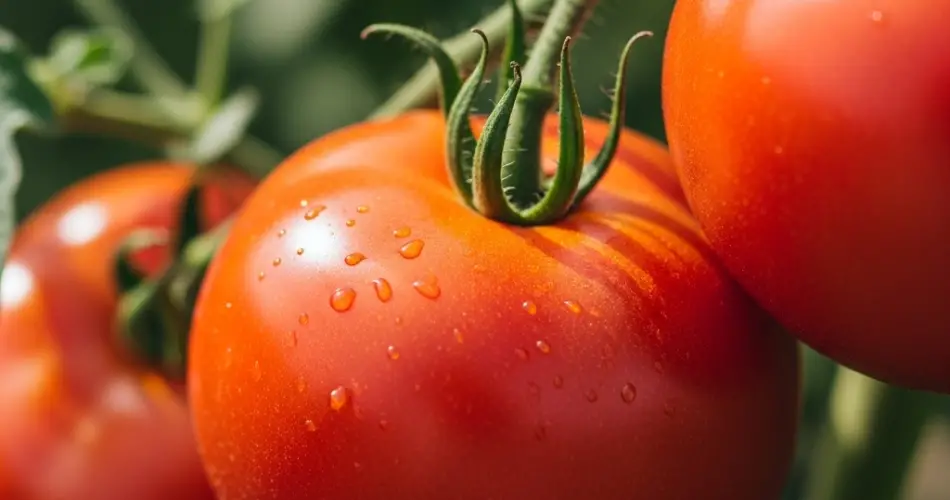Tomatoes are one of the most popular and rewarding vegetables to grow, whether in backyard gardens, greenhouses, or even containers on balconies. Yet, even experienced gardeners sometimes face challenges: stunted seedlings, yellowing leaves, and plants that just don’t seem to thrive. Weak or struggling tomato plants can be incredibly frustrating—especially when the growing season is short, and every day counts.
But there’s a simple, natural method that many seasoned gardeners swear by: adding just one spoonful of a specific mixture into the planting hole before transplanting your tomato seedlings. This small step can transform weak or slow-growing tomatoes into strong, healthy, fruit-producing powerhouses.
Why Tomatoes Struggle After Transplanting
Tomatoes are sensitive plants, particularly during and after transplanting. If the soil is poor, cold, or lacking nutrients, young seedlings can stall in growth or even wilt. Some common causes of weak tomato development include:
-
Poor soil nutrition — lacking phosphorus, potassium, or trace minerals
-
Unbalanced pH levels
-
Overwatering or poor drainage
-
Transplant shock
-
Weak root development
These issues can all cause stress to tomato plants, making them vulnerable to disease and reducing yield potential.
The One Spoonful Trick: A Natural Boost for Tomatoes
To give your tomatoes a head start, mix up a simple but powerful combination of natural ingredients and place a single spoonful of it directly in the planting hole before setting in your seedling. This technique boosts the plant from the very beginning, giving it access to essential nutrients and beneficial microbes right where it matters most—the root zone.
What’s in the Mix?
You don’t need anything fancy or synthetic. Most ingredients can be found in your kitchen or compost pile. Here’s a suggested mix for each hole:
-
1 tablespoon of wood ash or crushed eggshells – provides calcium and potassium, which help prevent blossom-end rot and improve fruit development
-
1 tablespoon of compost or well-rotted manure – adds essential organic matter and beneficial microorganisms
-
A pinch of bone meal or fish meal (optional) – supplies slow-release phosphorus to boost root growth and flowering
-
A sprinkle of cinnamon or crushed garlic (optional) – helps deter soil-borne pathogens and pests
Mix these ingredients together well and add about one heaping tablespoon to each planting hole. Once placed, lightly mix it into the bottom soil of the hole before setting in your tomato seedling.
Why This Method Works
This mixture creates a nutrient-rich microenvironment around the tomato’s roots, encouraging:
-
Rapid root development
-
Improved nutrient absorption
-
Stronger immune response against disease
-
Faster growth and earlier flowering
The result is that even weak or delayed seedlings often rebound within days—green leaves thicken, stems become stronger, and flowering begins earlier than expected.
Step-by-Step Guide to Applying This Technique
-
Dig a hole deep enough to bury at least two-thirds of the tomato seedling’s stem. Tomatoes grow roots from the buried stem, so deeper planting leads to stronger plants.
-
Add one spoonful of the nutrient mix into the bottom of the hole.
-
Lightly mix it with the soil in the hole to avoid root burn from direct contact with concentrated ingredients.
-
Insert the tomato seedling and cover with soil, pressing gently.
-
Water well to help the plant settle and activate the nutrients.
Repeat this method for every tomato you transplant, and monitor growth over the next 7–10 days—you’re likely to be amazed at the results.
Additional Tomato Growing Tips
To further enhance the health and productivity of your tomatoes:
-
Water consistently and deeply — allow the soil to dry slightly between waterings, but never let plants wilt
-
Mulch around the base — this conserves moisture and suppresses weeds
-
Remove lower leaves that touch the soil to reduce the risk of fungal infections
-
Support plants with cages or stakes to keep fruit off the ground
-
Pinch suckers (side shoots) to concentrate the plant’s energy on fruit production (especially for indeterminate varieties)
With this one-spoon technique at planting and proper ongoing care, you’ll likely enjoy earlier harvests, more tomatoes per plant, and stronger resistance to pests and diseases.
Conclusion
You don’t need expensive chemical fertilizers or complicated systems to grow abundant tomatoes. Sometimes, the simplest methods bring the biggest rewards. By adding just one spoonful of the right natural ingredients to each planting hole, you give your tomatoes the strong start they need to grow vigorously and fruit abundantly.
Even if your seedlings are small, pale, or stunted, this method can help them recover and thrive. It’s an easy, effective step that fits perfectly into any gardener’s routine—beginner or expert alike.
Try it this season, and you may find yourself surprised by the strength and productivity of your tomato crop. A tiny spoonful now can mean buckets of tomatoes later.



